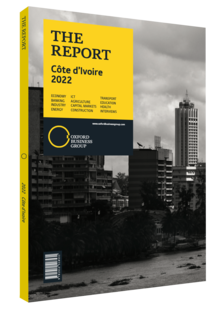How do new maturities on bonds finance UEMOA states
Economic activity in UEMOA strengthened in 2021, resulting in 6.1% estimated growth in GDP after a sharp slowdown in 2020 due to the effects of the Covid-19 pandemic. Economic stimulus measures implemented by member states and the accommodative monetary policy maintained by the Central Bank of West African States (Banque Centrale des Etats de l’Afrique de l’Ouest, BCEAO) were the primary drivers of this growth. The average annual inflation rate was estimated at 3.6%, compared with 2.1% in 2020, due to the rise in the price of imported food products and the decline in local agricultural production. UEMOA’s foreign exchange reserves stood at CFA14trn ($22.3bn) as of 2021, amounting to a monetary emission coverage rate of 79.3% and providing the bloc with six months of imports.
However, the acceleration of public investment within the framework of each member state’s stimulus plan has boosted public expenditure sharply compared to revenue, bringing the overall budget deficit including commitments and grants to CFA5.89trn ($10.1bn) in 2021, around 5.9% of regional GDP, compared with 5.6% in 2020, with some disparities between states. Accounting for capital transactions, UEMOA’s overall financing requirement, estimated at CFA4.14trn ($7.12bn) in 2021, up 42.3% compared to 2020, was covered by capital inflows from the regional financial market and eurobond issues.
Fundraising
Notwithstanding the fiscal consolidation supported by the IMF, the regional public debt market remained the main source of financing for UEMOA governments during 2021. Issues on the regional public debt market amounted to CFA7.3trn ($12.5bn) gross, a CFA3.2trn ($5.5bn) drop from 2020. This decrease is explained in particular by the 62.6% decline in bill issues following the end of the Covid-19 bill programme set up by the BCEAO at the end of 2020. The 4.6% increase in Treasury bond issues, however, helped mitigate the decline.
More than CFA2.1trn ($3.5bn) in Treasury bills was raised in 2021 – amounting to 28.3% of the total resources raised on the regional financial market – compared to CFA5.5trn ($9.5bn) in 2020. This included Support and Resilience Bonds, representing 32.1% of the resources raised, or CFA660bn ($1.13bn), with strong demand for the 12-month maturity, for a total of CFA1.2trn ($2.1bn), or 59.4% of the bonds issued over the time period.
Bond issuances spanned multiple maturities. CFA698bn ($1.2bn) was issued at a three-year maturity, CFA773bn ($1.33bn) at five years, CFA763bn ($1.3bn), at seven years, CFA609bn ($1.1bn) at 10 years and CFA11.3bn ($19.4m) at 12 years. Bonds carrying 15-year maturities were issued for the first time, at a value of CFA130bn ($223m). Additionally, three UEMOA countries raised resources totalling CFA2.1trn ($3.6bn) through eurobond issues: Benin, for a total amount of €1.5bn; Côte d’Ivoire, with €926.7m; and Senegal, for an amount of €775m.
Risks & Opportunities
The macroeconomic outlook within UEMOA over the next five years remains favourable, despite an increase in risk due to geopolitical tensions between Russia and the Europe-US bloc; disruptions caused by regional security, health and socio-political crises; and adverse weather conditions. States will have significant recourse to local and international markets to finance their programmes. To this end, several measures have been planned to improve regional financial market operations, including the adoption of a single central securities depository and the transition to integrated market supervision to open traditional markets to non-bank investors; the development of the secondary securities market through the adoption of a reliable rate curve; and, lastly, the implementation of new products in the regional market, a measure that should allow UEMOA member states to raise financial resources with longer maturities.
You have reached the limit of premium articles you can view for free.
Choose from the options below to purchase print or digital editions of our Reports. You can also purchase a website subscription giving you unlimited access to all of our Reports online for 12 months.
If you have already purchased this Report or have a website subscription, please login to continue.

